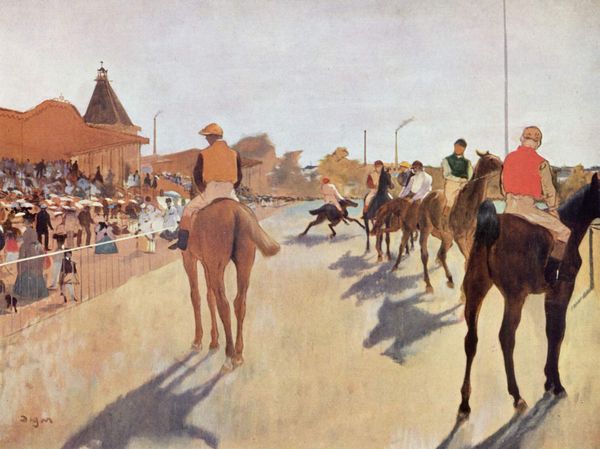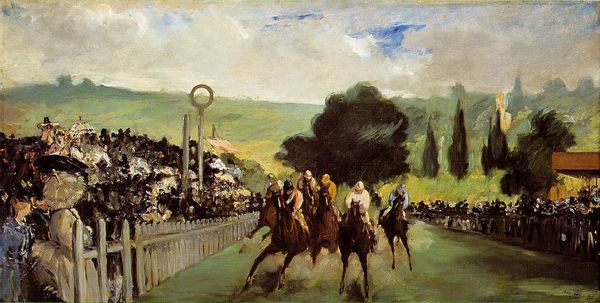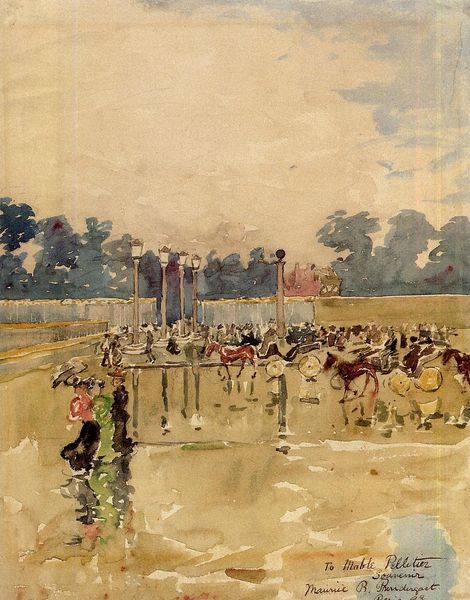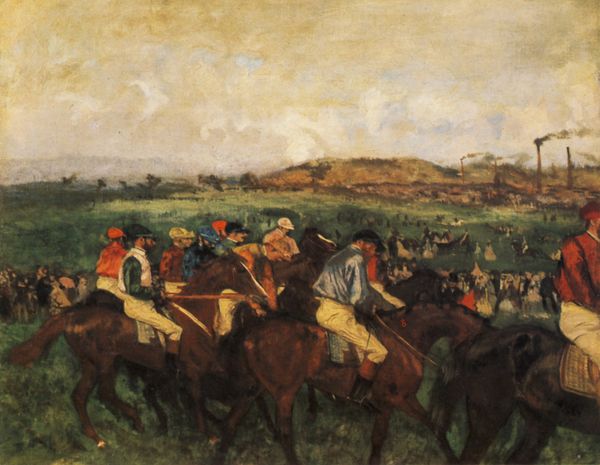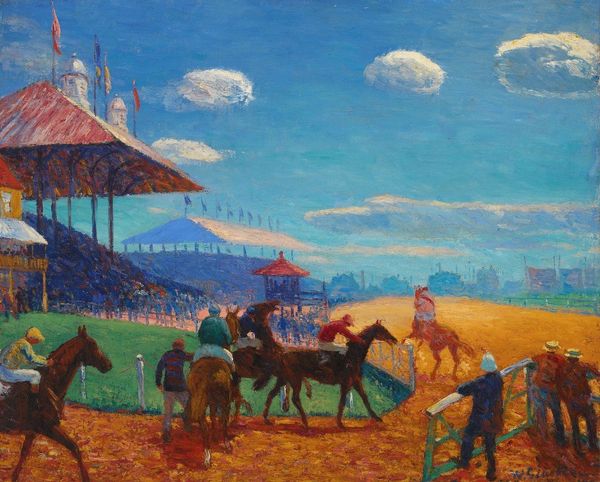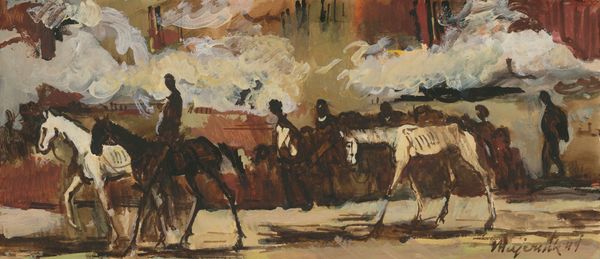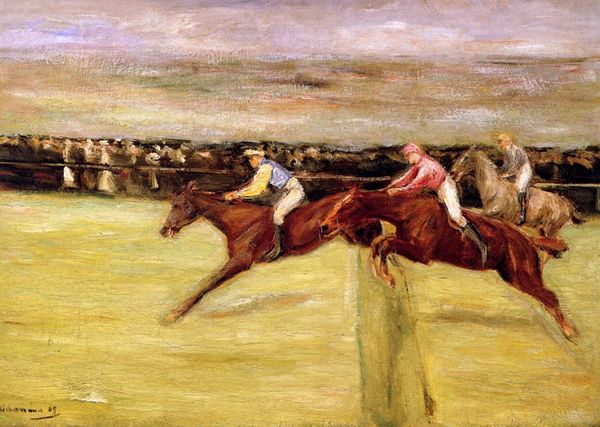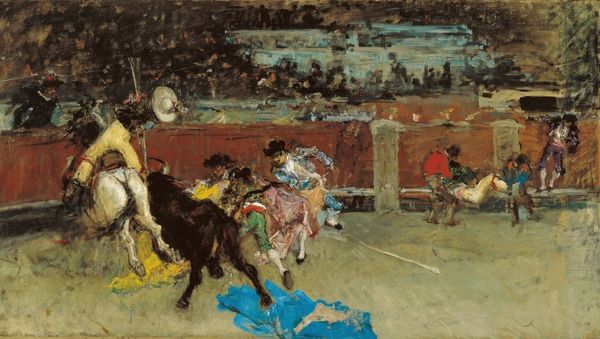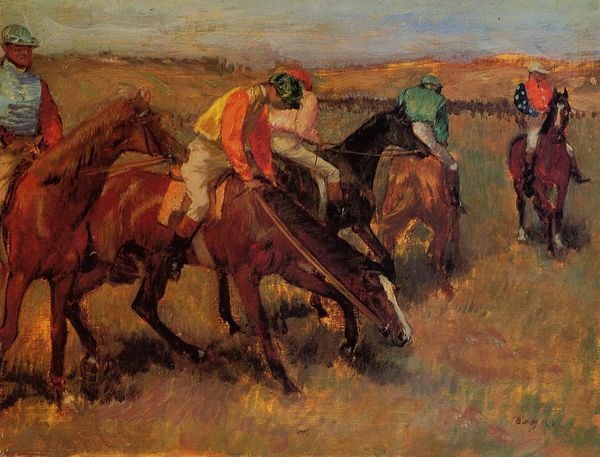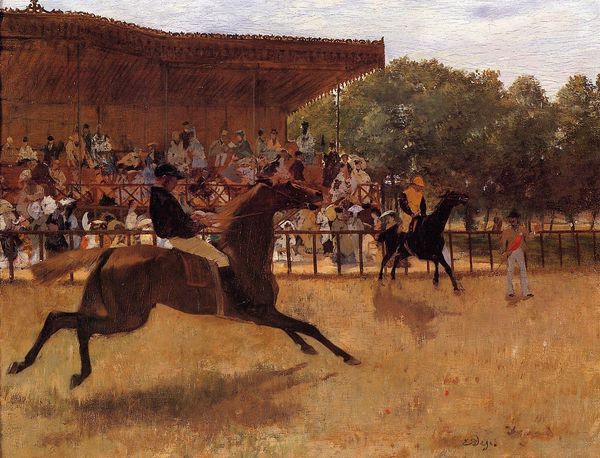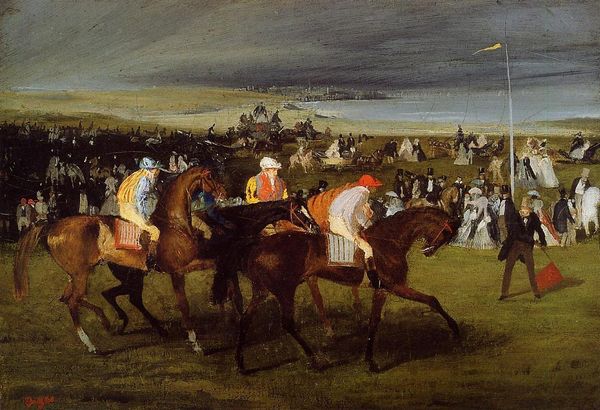
painting, oil-paint
#
animal
#
painting
#
impressionism
#
oil-paint
#
landscape
#
impressionist landscape
#
oil painting
#
horse
#
men
#
genre-painting
Dimensions: 73 x 92 cm
Copyright: Public domain
Curator: Looking at Edouard Manet's "The Races in the Bois de Boulogne," created in 1872 and housed right here at the Whitney, I'm struck by its candid snapshot of Parisian leisure culture. Editor: My initial impression is one of barely controlled energy. It's almost dizzying – a rush of movement, the horses seem about to leap off the canvas! Curator: Indeed! This wasn't just about depicting a horse race; it reflected the burgeoning Parisian society's fascination with speed and modern spectacle. The Bois de Boulogne was transformed into a public stage for the elites. Editor: Those elongated horses... there’s an almost mythical quality to them, exaggerated yet powerful. Think about how the horse has symbolized power and status across cultures and eras. Are we also seeing Manet comment on the spectacle of class? Curator: Possibly. Manet frequently explored contemporary life and didn't shy away from the visual culture of the Second Empire. The Bois de Boulogne, then, acted as a background for imperial displays of wealth and recreation. One could analyze how art institutions shaped such perceptions too. Editor: Consider the figures blurring in the background. They represent both presence and transience—how social scenes can be lasting and fleeting. They echo images and stories of past generations attending such spectacles. I think Manet is cleverly placing us inside of that symbolic narrative. Curator: Exactly. Also consider his technique: Manet’s brushwork is loose and immediate, perfectly capturing that sense of fleeting, instantaneous vision. The use of oil paints also reflects then modern tastes. Editor: And the overall composition itself draws attention. The white track dividing the scene. What stories might be held in such separations? Curator: The placement creates that divide within the viewing, perhaps indicative of class, access to spectacle, and a public stage of the races. Editor: I now think about Manet’s canvas as a microcosm of so much of the human story itself. A theater of power, motion, fleeting impressions. Curator: It encapsulates social spectacle with a modernist interpretation, capturing both its allure and inherent fleetingness.
Comments
No comments
Be the first to comment and join the conversation on the ultimate creative platform.
